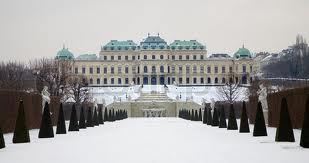 |
| Picture: Colourbox.com |
I'm just back from a long weekend in Vienna, inspired to return for the first time in a decade by David Packwood's fine account of his recent visit.
Vienna is a fascinating city, a great imperial capital from the fifteenth century and an intellectual and cultural powerhouse without equal in the late nineteenth and early twentieth century. After World War I Vienna went suddenly from being the cosmopolitan capital of a great empire to being just a big city in a small country. It inherited a great imperial bureaucracy with a city hall exchequer. The arts are an easy target in hard times, and there were serious discussions about selling off some of the Habsburg treasures, which had only just been nationalised; until after World War I the art collections were the private property of the Emperor. The Albertina came close to being sold en bloc to Boston, split between the Museum of Fine Arts and the Fogg Museum at Harvard. Lucky for Vienna, the sale was aborted.
Vienna's fascinating history has inspired a vast literature. I recommend Alan Janic and Stephen Toulmin's Wittgenstein in Vienna and Carl Schorske's Fin de Siecle Vienna, both focused on the period of intellectual ferment in the late nineteenth and early twentieth century. I'm not aware of any monumental history of Vienna comparable to Alexandra Richie's Faust's Metropolis on Berlin, but I hope someone is writing one - I'd love to read it.
On this visit I went to the Belvedere for the first time, and it was a pleasant surprise. Mitteleuropa-palace-baroque isn't generally my thing, but it's a fine building with good proportions and excellent light. It has made the transition to picture gallery more successfully than some of its peers, perhaps partly because little of its exuberant original decoration survives. The Belvedere has an odd selection of collections - medieval Austrian art (highlights in the Upper Belvedere, leftovers in the old stables at the end of the garden), eighteenth and nineteenth century Austrian art, odds and ends of European art (version of David's Napoleon on the St Bernard Pass, some impressionists), and of course the Vienna Secession.
 |
| Picture: Kunstpresse.at |
It's worth visiting just for the room of Messerschmidt character busts. A dozen are arranged in a circle in a small circular room with seven windows providing fabulous lighting. It was a better experience than seeing the whole of the Louvre's Messerschmidt exhibition a couple of years ago, where the lighting was worse and the rooms too crowded.
 |
| Picture: Wikipaintings |
I enjoyed the Biedermeier and Baroque paintings, but my limited knowledge of these little masters made me impatient. The masterpieces of the Vienna Secession are familiar to everyone, and easily appreciated. I particularly liked the Kokoschka portraits in these rooms, with their wonderfully expressive hands. His Portrait of the Painter Carl Moll is pictured above, but the reproduction is unjust to the feverish dynamism of the original.
 |
| Picture: Belvedere |
Medieval Austrian art was moved to the Belvedere from the Kunsthistorisches in the 1950s. Most of it is unfamiliar to me, but I thought some of it really rather good. I liked the Michael Pacher - Dürer's master. The fragments of an altar from the Franciscan Church in Salzburg are damaged but very impressive, and show awareness of trends in Italian art. The figure binding Christ in the Flagellation (above) looks to be straight out of Mantegna. It's a shame that some of these paintings can't be shown at the Kunsthistorisches, to allow better appreciation of Austrian art in the context of the more familiar 'greatest hits' of European painting.
Conrad Laib's Crucifixion altarpiece was also impressive, but I wondered how much of its stunningly bright appearance is down to restoration. It's a nice example of International Gothic that would provide a precursor to the Kunsthistorisches collection, which only properly gets going in the sixteenth century (give or take a Tura and a Mantegna or two...). But that's a story for a future post.
No comments:
Post a Comment